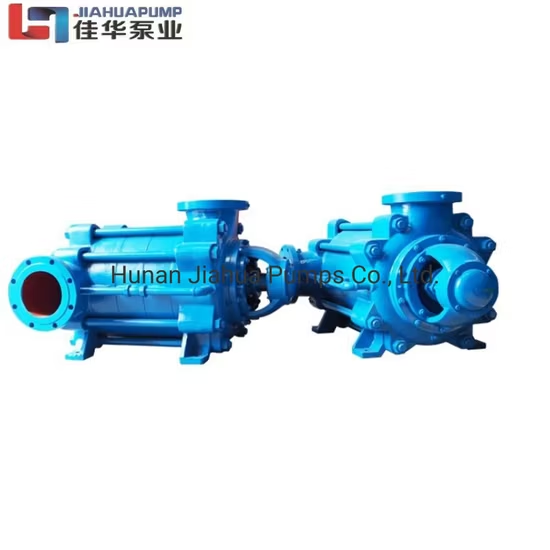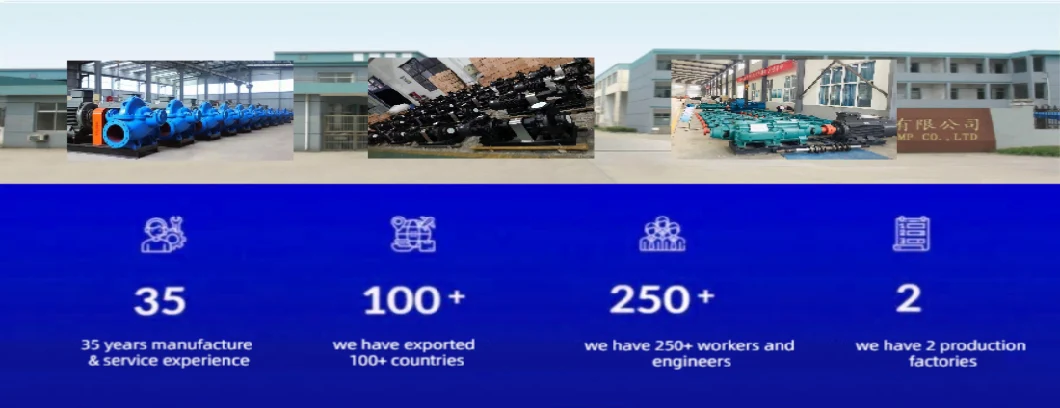
Good Quality Horizontal High Suction Head Self-Priming Trash Ash Centrifugal Water Pump 3′′/4′′/5′′
Basic Info
| Model NO. | 150ZW150-50-45 |
| Working Pressure | Middle Pressure Pump |
| Influent Type of Impeller | Single Suction Pump |
| Position of Pump Shaft | Horizontal Pump |
| Pump Casing Combined | Verticaljoint Surface Pump |
| Mounting Height | Suction Centrifugal |
| Impeller | Closed |
| Usage | Pump, Pumps, Condensate Pump, Ash Pumps, Circulating Pump, Trash Pump |
| Material | Cast Iron, Stainless Steel |
| Transport Package | Plywood Case |
| Specification | 1500*1200*1200mm |
| Trademark | SEMHAI or OEM |
| Origin | China |
| HS Code | 8413709990 |
| Production Capacity | 1000000sets/Year |
Product Description

Product Description
Self-priming pumps are a specific type of liquid pump designed to have the required liquid inside the cavity or pump body necessary to start the pumping process. This offers the potential for increased operating efficiencies in process plants where pumps are used for a variety of repeated yet intermittent operations.
If a pump is located beneath the level of the liquid to be pumped, gravity and air pressure ensure that it is constantly filled with the liquid and there can be no ingress of air into the pump or suction line.
In many applications, a pump has to be placed above the level of the liquid, for example, when emptying an underground storage tank. At start-up, there will be air in the suction line and before the pump can discharge the liquid, this air must be evacuated or displaced. Pumps are optimized to move a particular liquid; evacuating a gas is a very different challenge.
Various methods can be used to get around this problem. A secondary pump can be used to evacuate the suction line. A non-return (foot) valve or evacuation tank can be used to stop fluid draining from the suction line when the pump is stopped.
However, these solutions all involve extra equipment, piping, and processes. Ideally, for these applications, a pump is required that can evacuate air from the suction side at startup before commencing its normal pumping mode. Such a pump is considered to be self-priming.
This process repeats until all air is evacuated and vacuum forms in the suction line. Once this happens, atmospheric pressure forces the water into the suction line and towards the impeller to allow pumping to begin.
Detailed Photos
In order to balance axial thrust, there are both wear rings in front and at the back of the majority of the impeller and the balance hole is on the back shroud of the impeller. The axial thrust of some pumps is not big enough, so there is no wear ring and balance hole at the back of the impeller.High-precision casting impeller can ensure the performance, material in cast iron, stainless steel and bronze.Packing pump cover is equipped with stuffing, for soft packing seal, the stuffing may pass into a certain pressure of water for seal cooling, lubrication, cleaning;Single mechanical seal and double mechanical seal two species for mechanical seal, a certain pressure into the seal cavity through the water, rinse the end surface friction, while cooling effect. According to demand while allowing the use of a sealed cavity adapted to form a predetermined size of ISO3069 other structures, such as mechanical seal with corrugated pipe and expeller seal.Flexible couplings
Unlike rigid couplings, flexible couplings can accommodate some movement e.g. vibrations and thermal expansion without damage. This makes them ideal for applications where there is a degree of unavoidable misalignment between the drive and pump shafts. As they can absorb vibrations well, they can also be used to reduce excessive operating noise. With these benefits come a more complex, expensive design. However, as flexible couplings protect the shaft and bearings from damage and premature wear, there are maintenance savings to be had in the long run.
We use wear-resisting disc coupling or pin coupling.
Product Parameters
| Working principle | Self-priming pump |
| Usage | Water, oil, chemical , food |
| Size | 32-500mm |
| Flow rate | 3.2-2200m3/h |
| Head | 12-80m |
| Power | 1.1-315kw |
| Suction head | 4-12m |
| Material | Cast iron, ANSI304, ANSI316, duplex ss |
| Impeller type | Closed impeller/wide-cross impeller for self-priming sewage pump |
| Max.temp. | 120'C(can customize max. temp. 200'C) |
Product Application
Self-priming pumps are used in various industrial and commercial facilities, from steel mills, power plants, and sewage treatment facilities to wineries, breweries, and more. Common applications include:Pumping water, fuels, clear or gray water, raw sewage, industrial wastewater, and more
Liquid transfer systems
Irrigation
Basement floodwater pumps
Bailing out boats
Increasing water pressure
Sewage treatment
Facilities & Equipments
FAQ
1. What's the advantages Of Self-Priming Centrifugal Pumps?
a. Can handle a variety of liquids.
b. Work well with slurries, corrosive liquids, and suspended solids.
c. When compared to submersible-type pumps, self-priming centrifugal pumps will continue to pump liquids even after the pump is no longer submerged in a liquid tank or vessel.
d. Ideal for frequent and intermittent pumping operations, as the steps involving pump priming on start-up are eliminated.
2. What's the disadvantages Of Self-Priming Centrifugal Pumps?
a. Can't operate without the presence of the initial priming liquid in the pump's reservoir.
b. Due to the need for a liquid reservoir, this type of centrifugal pump can be larger than a standard model, which may cause issues in applications where space is limited.
c. Need to be as close as possible to production lines to avoid depletion of the pump's liquid reservoir during self-priming operations.
3. Are Positive Displacement Pumps Self-Priming?
In principle, all positive displacement pumps are self-priming. In particular, this includes rotary gear pumps (internal and external), lobe pumps, vane pumps, and diaphragm pumps. A common feature of all positive displacement pumps is the use of close-tolerance parts to prevent fluid from returning from the discharge to the suction side.
Depending on the effectiveness of these seals created by these close-tolerance parts, a positive displacement pump is capable of venting air from its suction line to some extent. However, under dry running conditions, a pump may overheat and this can cause seal wear and pump failure.
With reciprocating pumps, there is also a danger of cavitation occurring at the point when liquid starts to enter the pump and there is a liquid/air mixture. Under these conditions, vapor bubbles form and expand on the suction side of the pump. Upon reaching the high pressure, discharge side of the pump, the bubbles collapse violently causing vibration and damage to the pumping elements.
For these reasons, it is important to refer to the manufacturer before using a positive displacement pump in an application where it must self-prime and, of necessity, be run dry for any period.
4. Are Centrifugal Pumps Self-Priming?
With centrifugal pumps, the pumping action is generated by the transfer of rotational energy from the impeller to the liquid. There are no seals between the suction and discharge sides of the pump. This means that centrifugal pumps are ineffective with gases and are not capable of evacuating air from a suction line when the liquid level is below that of the impeller.
In such cases, the pump is said to be air-bound and there is a danger of overheating: generally, pumps rely on the pumped fluid to lubricate and cool the pump's bearings.
However, with a few modifications to the basic design, a centrifugal pump can be self-priming. The impeller and volute casing is essentially surrounded by a tank so that it can always be immersed in a liquid sufficient to get the pump started and provide the pump with lubrication and cooling provided the time is taken to prime the pump is not excessive.
It is important that a self-priming centrifugal pumps reservoir is filled correctly with liquid after installation. "Self-priming" in this context means that the pump has the ability to use liquid stored in its housing to generate a vacuum on the suction line. Even a 'self-priming' centrifugal pump will not operate when dry. With appropriate bearings and seals, a centrifugal pump can tolerate dry running for a limited time but this is not recommended for extended periods.
5. Why Your Self-Priming Pump Won't Prime?
a. Air Leak In Suction Line
As fluid recirculates in the pump and forces air out of the discharge chamber, it's trying to create an area of low pressure. However, if there's a leak in the suction line, air continues to be drawn into the pump, never allowing it to release enough to create that area of low pressure.
b. Debris In The Impeller
If the eye of the impeller is plugged with debris, it removes the hydraulic capacity of the impeller to create an area of low pressure.
c. Pump Is Air Bound
A pump can become air-bound if it experiences any of these conditions:
No Air Release Line. If there is no air release line, air cannot be vented to the atmosphere, and instead collects on the discharge side.
Discharge Line Is Pressurized. Valve on the air release line is closed, and the valve on the discharge line is closed, again, giving no place for the air to go and get out of the pump.
Excessive Impeller Clearance. If there is excessive clearance between the impeller and the wear plate, the pump has a difficult time creating a low-pressure area. This is typically caused by wear, but could also be due to improper reassembly.
d. Plugged Recirculation Port
During the priming process, as discussed above, fluid is recirculated through the volute casing. If the recirculation port becomes plugged, the eye of the impeller is unable to create an area of low pressure in which to pull liquid up the suction line.
e. Lift Too High For Pump Speed Or Impeller Diameter
If you've undersized the pump for the suction line, it will not be able to create the low-pressure area it needs to prime. It's important to understand the suction lift requirements before selecting a pump for the application. Use Gorman-Rupp's Pump Selection Guide for the calculations you'll need.
The ability for self-priming pumps to prime hinges on all the right conditions. The pump must be able to evacuate air from inside the pump, create a low-pressure area at the eye of the impeller, and also be properly sized for the right NPSH conditions.
The ability of a pump to self-prime can be affected by several factors. The discharge line must not be pressurized or blocked. With all types of pumps, the suction line must be air-tight. If air continues to be drawn into the pump, the pressure is never reduced and fluid is not drawn up the suction line.
It is also important that the volume of the suction-side pipework is minimized to reduce the priming time. With excessive priming times, there is a danger that the liquid charge will evaporate before the pump is primed. The consequential dry-running may then cause damage to the pump.
In the case of centrifugal pumps, anything that affects the efficiency of the impeller will limit the self-priming ability. If the liquid contains any solids, debris may collect in the recirculation port, impeding the circulation of fluid and the generation of the liquid ring.
Debris collecting on the impeller itself will reduce its ability to generate a low-pressure region at the eye. Also, as a pump age and succumbs to wear, the clearances between the impeller and volute case increase and the pump is less able to generate a low-pressure zone. Internal clearances can also be affected by the incorrect assembly after maintenance.
When pumping water in cold environments, it's important, if the temperature may fall below freezing, to drain a pump or to provide some form of heating. Damage may occur if water freezes in the pump or pipework.




